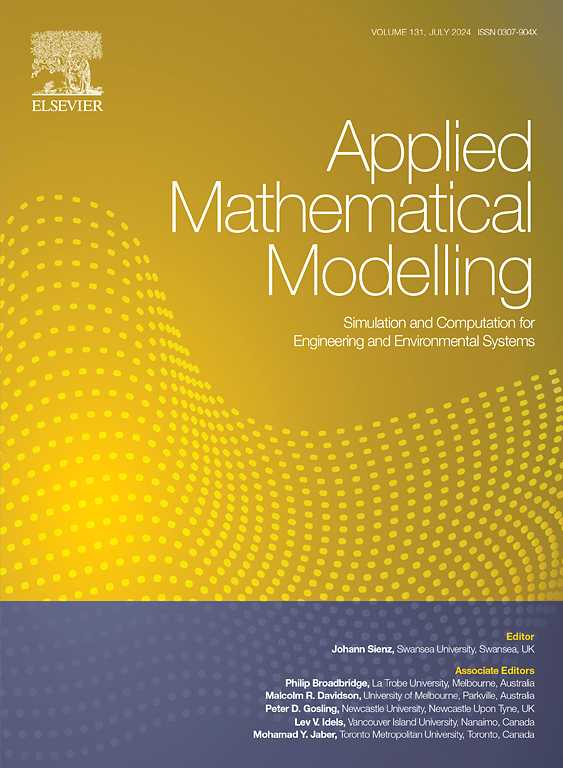Optimal control of stochastic fractional rumor propagation model in activity-driven networks
IF 4.4
2区 工程技术
Q1 ENGINEERING, MULTIDISCIPLINARY
引用次数: 0
Abstract
Activity-driven networks have become a key paradigm for studying the time evolution of stochastic networked systems. Consider the fact that individuals in activity-driven networks have some degree of memory, and they assess the credibility of current information based on their prior knowledge. In addition, the number of potential participants in rumor propagation dynamically changes, and the actual network topology driven by activity is affected by environmental noise. Previous studies have overlooked the stochastic nature of activities and instead generalized the system dynamics with constant parameters. To fill this gap, we propose a stochastic fractional-order rumor propagation model that takes into account the variation of node activity rates and conduct an optimal control study. We utilize Caputo fractional-order derivatives to depict memorability, model stochasticity using standard Wiener processes, and formulate fractional-order stochastic differential equations to describe the dynamics of rumor propagation on activity-driven networks. Firstly, stochastic fractional-order equations with consistent unit dimensions are derived. Secondly, the existence and uniqueness of the solution to the stochastic fractional-order model are proven using Picard's iterative method, and the issue of rumor extinction is investigated. Then, Pontryagin's minimum principle and optimal control theory are applied to derive the necessary conditions for fractional-order optimal control. Finally, the theoretical results are validated using two real datasets, and the optimal fractional order is determined through a real-world case. The simulation results show that the smaller the fractional order, the more significant the suppression effect on rumor outbreaks, but the extinction time of the rumor is prolonged accordingly. In addition, the appropriate level of noise intensity can effectively suppress rumor outbreaks, suggesting the presence of stochastic resonance. Furthermore, the implementation of optimal control can effectively curb rumor outbreaks and shorten the life cycle of rumors.
活动驱动网络中随机分数谣言传播模型的优化控制
本文章由计算机程序翻译,如有差异,请以英文原文为准。
求助全文
约1分钟内获得全文
求助全文
来源期刊

Applied Mathematical Modelling
数学-工程:综合
CiteScore
9.80
自引率
8.00%
发文量
508
审稿时长
43 days
期刊介绍:
Applied Mathematical Modelling focuses on research related to the mathematical modelling of engineering and environmental processes, manufacturing, and industrial systems. A significant emerging area of research activity involves multiphysics processes, and contributions in this area are particularly encouraged.
This influential publication covers a wide spectrum of subjects including heat transfer, fluid mechanics, CFD, and transport phenomena; solid mechanics and mechanics of metals; electromagnets and MHD; reliability modelling and system optimization; finite volume, finite element, and boundary element procedures; modelling of inventory, industrial, manufacturing and logistics systems for viable decision making; civil engineering systems and structures; mineral and energy resources; relevant software engineering issues associated with CAD and CAE; and materials and metallurgical engineering.
Applied Mathematical Modelling is primarily interested in papers developing increased insights into real-world problems through novel mathematical modelling, novel applications or a combination of these. Papers employing existing numerical techniques must demonstrate sufficient novelty in the solution of practical problems. Papers on fuzzy logic in decision-making or purely financial mathematics are normally not considered. Research on fractional differential equations, bifurcation, and numerical methods needs to include practical examples. Population dynamics must solve realistic scenarios. Papers in the area of logistics and business modelling should demonstrate meaningful managerial insight. Submissions with no real-world application will not be considered.
 求助内容:
求助内容: 应助结果提醒方式:
应助结果提醒方式:


